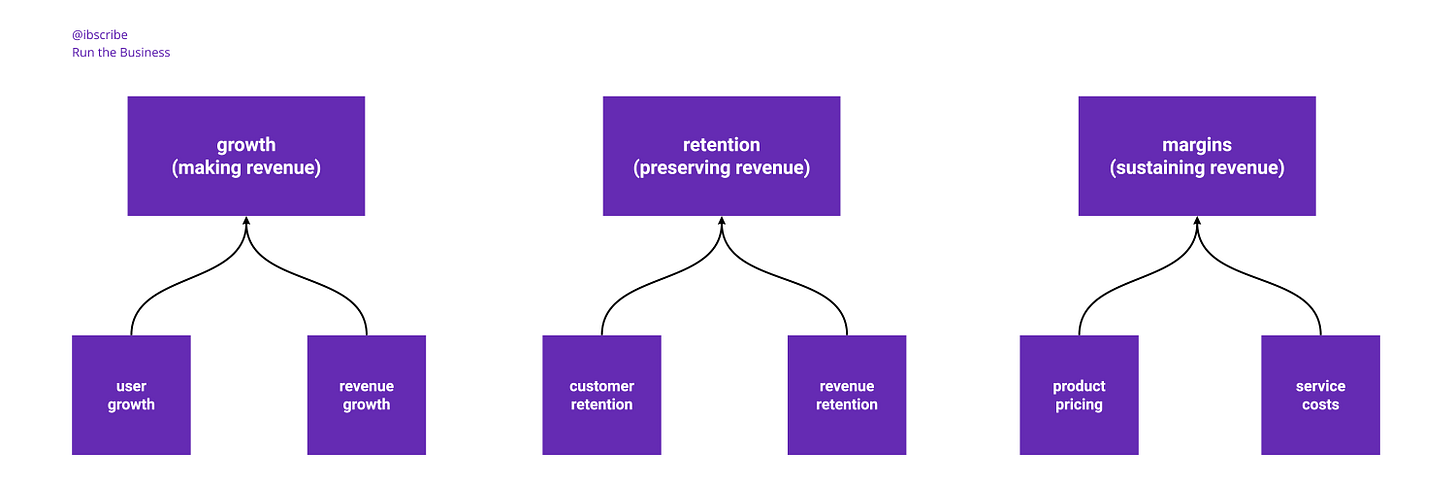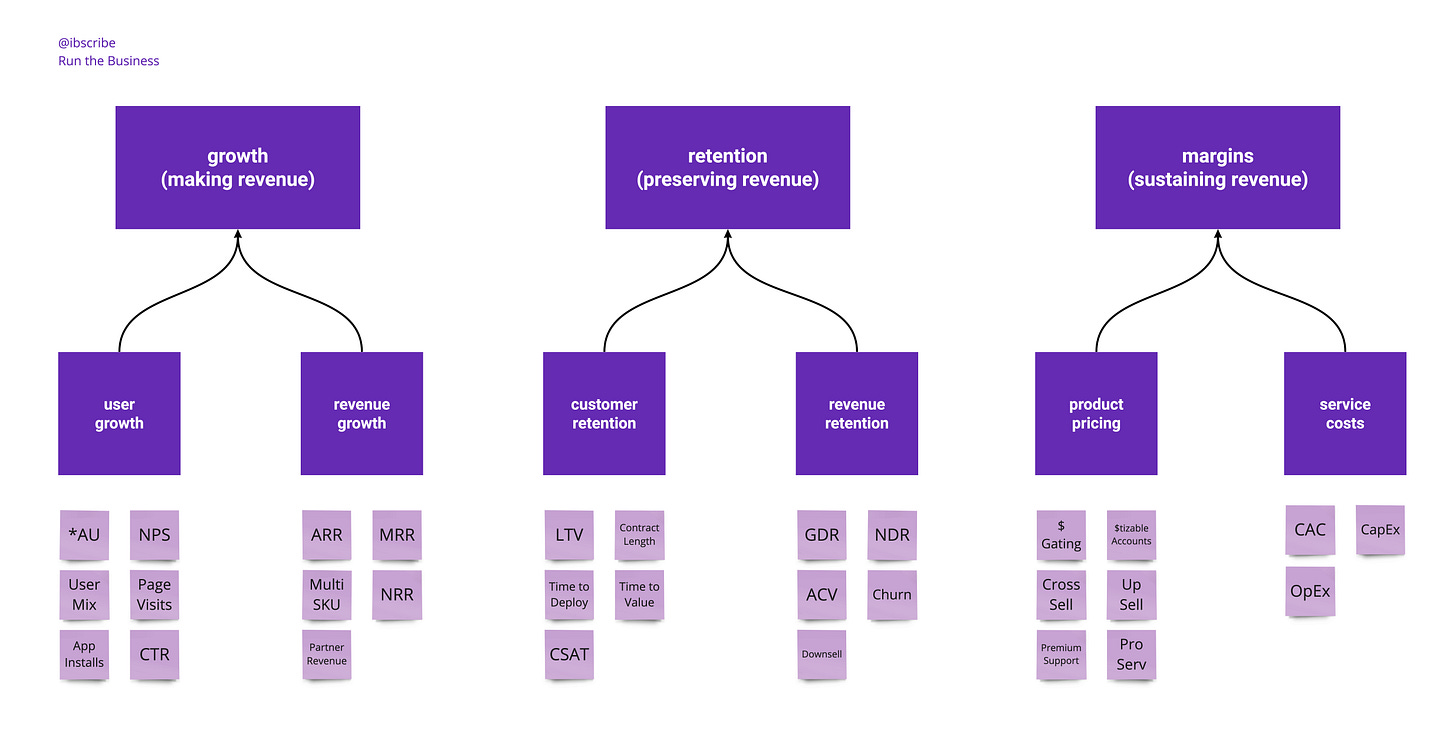I wrote an unconventional post (my stream of consciousness thoughts while reading a Twitter thread) about 6 months ago that sparked a lot of discussion from readers. The following sentence in particular elicited a lot of reactions:
“in B2B products, you have to connect to revenue (generation or preservation)”
The 2 big questions that came up were:
Why does product have to connect to revenue?
How do you actually show that connection?
Yesterday’s audio post answered question #1. Today I’d like to elaborate on question #2.
At the highest level, a B2B business can be broken down into 3 KPIs:
growth
retention
margins
When stating that product has to connect to revenue, I’m taking into account how each of these top-level metrics has a revenue component:
growth → revenue generation
retention → revenue preservation
margins → revenue sustainability
Now these business KPIs might be too big a jump for a product org to rally around - what’s more likely during a planning cycle (annual / bi-annual / quarterly) is to think about major metrics levers you can impact. Something like this:
The key takeaway here is that product strategy should be oriented around moving levers which ultimately ladder up to top-level business KPIs.
Ok, so this line of thinking might make sense to someone on the product leadership team, but if you’re a PM accountable to a team that’s just trying to connect their day-to-day output to the larger story, how do you demonstrate that? Your on-the-ground concerns are probably things like active users or CSAT or time to activate or add-on attach rate or cost of the notifications infrastructure.
It can all connect.
No matter what your product team’s north star is, this framework can be used to connect the dots from top to bottom. The one instance where product work doesn’t connect at all is a disjointed company (i.e. the product value has no correlation to business value).
So let’s go back to the 3 top-level metrics, and how product can impact them:
product can help land / close deals OR just activate a user base for eventual monetization -> revenue growth
product can help prevent churn by increasing usage sophistication / encouraging stickiness -> revenue preservation
product can help reduce the cost to run the service OR unlock charging premium pricing -> revenue sustainability
This concept of “laddering” is critical not only for PMs who lead product teams to absorb but also their peers / partners. From an accountability / leverage perspective, a product team that’s spinning its wheels could be (a) more marketing budget (b) more sales reps (c) more support agents etc.
As always, I’d also love to hear from readers on their attempts to connect their products to revenue - please chime in via comments👇. And if you enjoyed this post, please consider subscribing.
further reading / references
you might enjoy Product Onions if you want to see a real-life example of attempting to connect product metrics to company revenue
Cultivating a Revenue Mindset for B2B PMs is a quick (5 minutes) audio post explaining why it’s critical to understand how product moves the business
if you’re looking for guidance on how to actually determine free vs paid in your product packaging, check out this post
while thinking about revenue vs just user activity might feel like an expansion of PM scope, it’s part of a larger trend around the evolving definition of product management
childish drawing / interpretation






